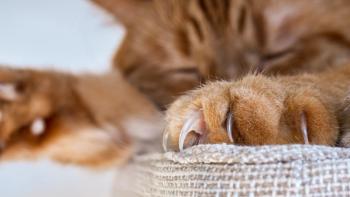
Research Update: Effect of the moon on emergency room visits
In this retrospective case series from a university veterinary medical center, the frequency of canine and feline emergency visits were noted with respect to the lunar cycle.
In this retrospective case series from a university veterinary medical center, the frequency of canine and feline emergency visits were noted with respect to the lunar cycle. Emergencies were classified as animal bite, cardiac arrest, epilepsy, ophthalmic, gastric dilatation-volvulus, trauma, multiple diseases, neoplasia, or toxicosis. Of the 11,940 cases seen during the 11-year period, 9,407 involved dogs and 2,533 involved cats. The lunar cycle was classified into eight phases, ranging from new moon to full moon to waning crescent moon, and lasted 29.5 days. The effect of the lunar phase on the emergency visits was evaluated by calculating relative risk.
The results of the study revealed that the number of emergencies on full moon days was not significantly different from nonfull moon days for either dogs or cats. However, significant differences existed in the number of emergencies for both animals observed on fuller moon days (waxing gibbous, full moon, and waning gibbous phases) compared with other days. The risk was 28% greater in dogs and 23% greater in cats. According to the authors, these slight increases would probably not be recognized by attending emergency clinicians. They also acknowledged the limitations of this low caseload study and concluded that further investigations at other clinical facilities with greater patient numbers are warranted.
COMMENTARY
The effect of the lunar cycle on animal and human medical conditions has always been a source of interest and debate. Although this study is limited to one institution and small animals and has low case numbers, the data are revealing because they may dispute the notion that moon phases influence caseload. The authors also present references from the human medical field with conflicting evidence regarding the relationship between the moon and disease states. Unfortunately, in this paper, the effect of the lunar cycle on the type of emergency was not delineated. The authors also noted that the exact mechanism for explaining the effect of the moon phase has never been elucidated.
Wells RJ, Gionfriddo JR, Hackett TB, et al. Canine and feline emergency room visits and the lunar cycle: 11,940 cases (1992-2002). J Am Vet Med Assoc 2007;231(2):251-253.
The information in "Research Updates" was provided by Veterinary Medicine Editorial Advisory Board member Joseph Harari, MS, DVM, DACVS, Veterinary Surgical Specialists, 21 E. Mission Ave., Spokane, WA 99202.
Joseph Harari
Newsletter
From exam room tips to practice management insights, get trusted veterinary news delivered straight to your inbox—subscribe to dvm360.






